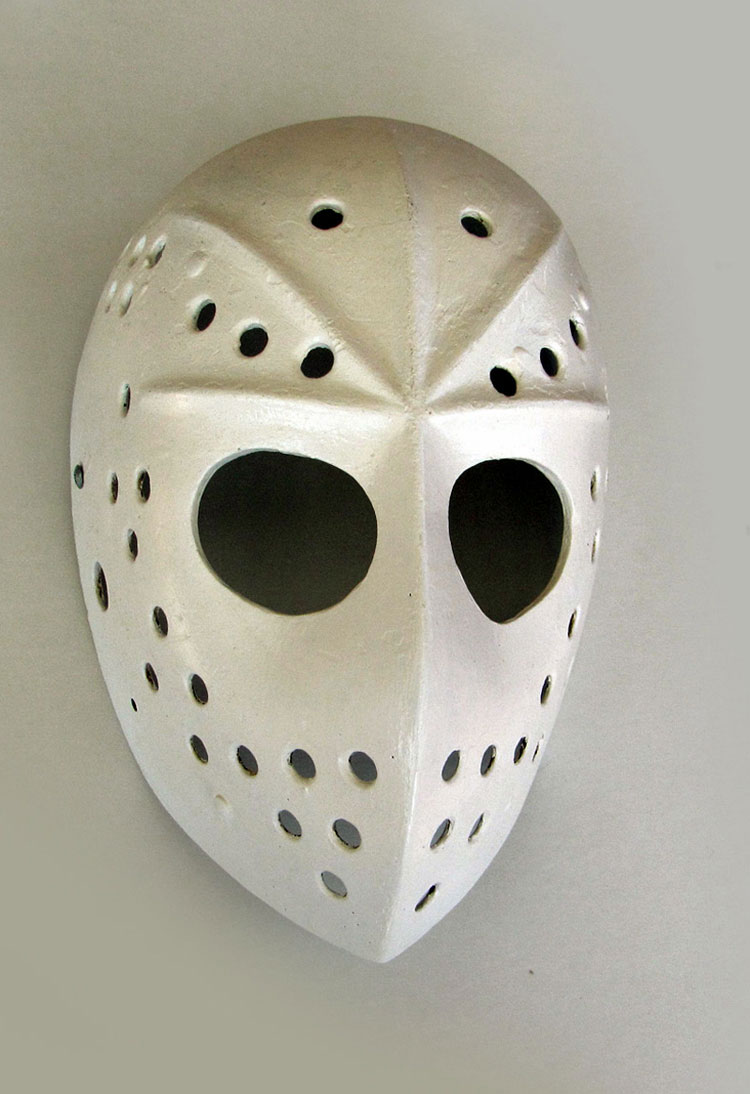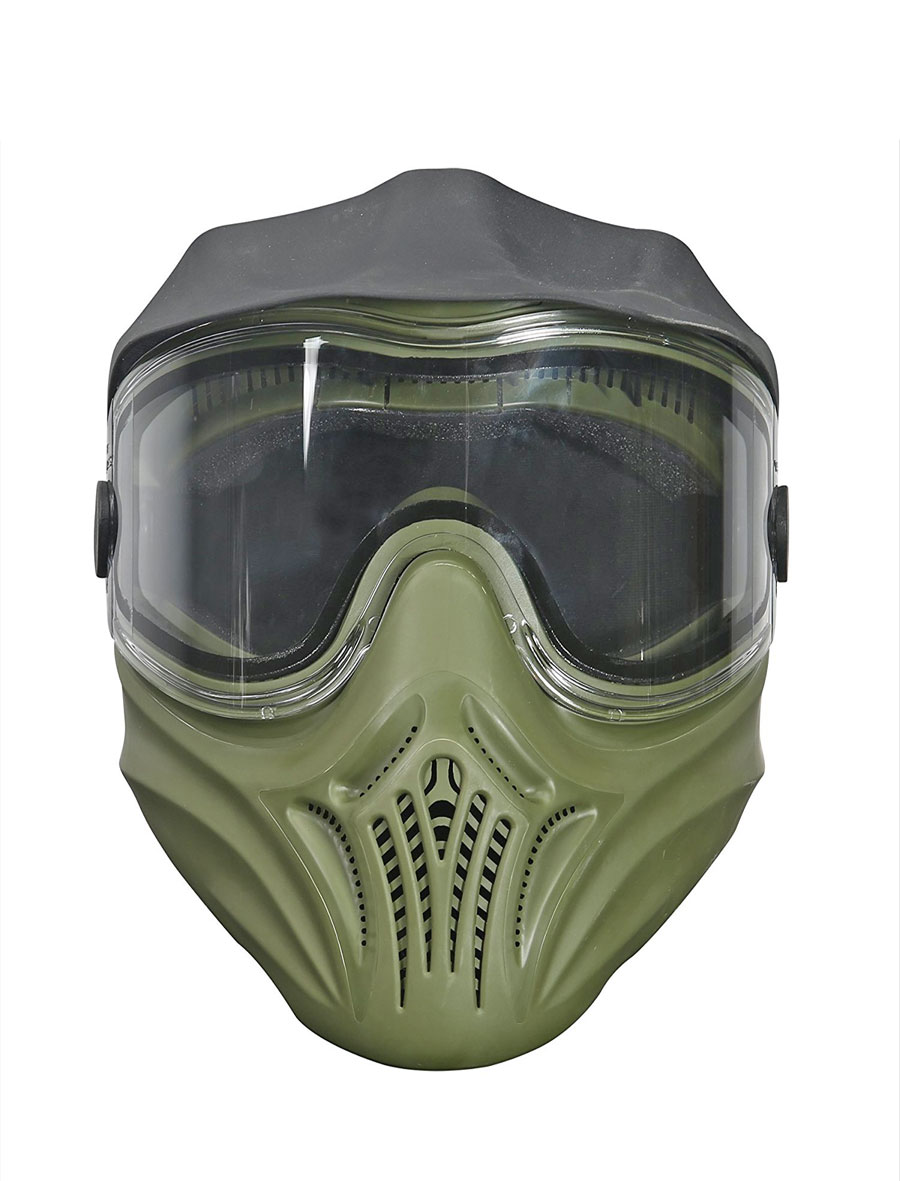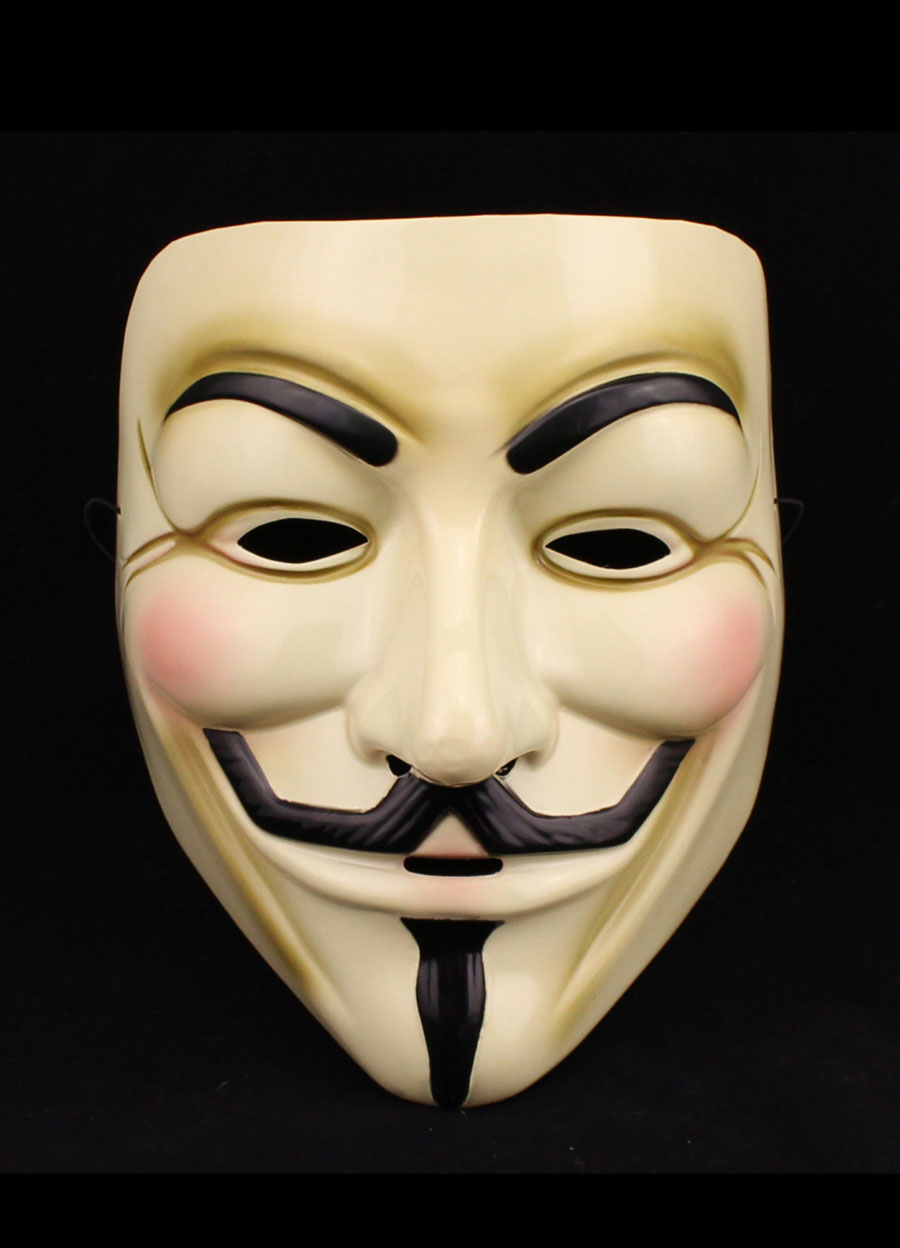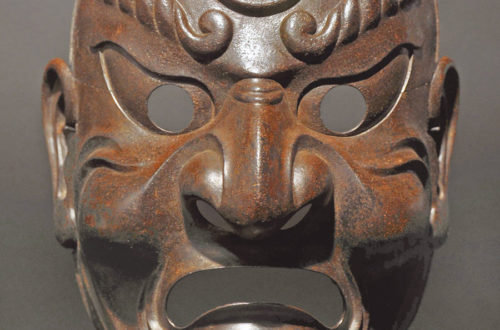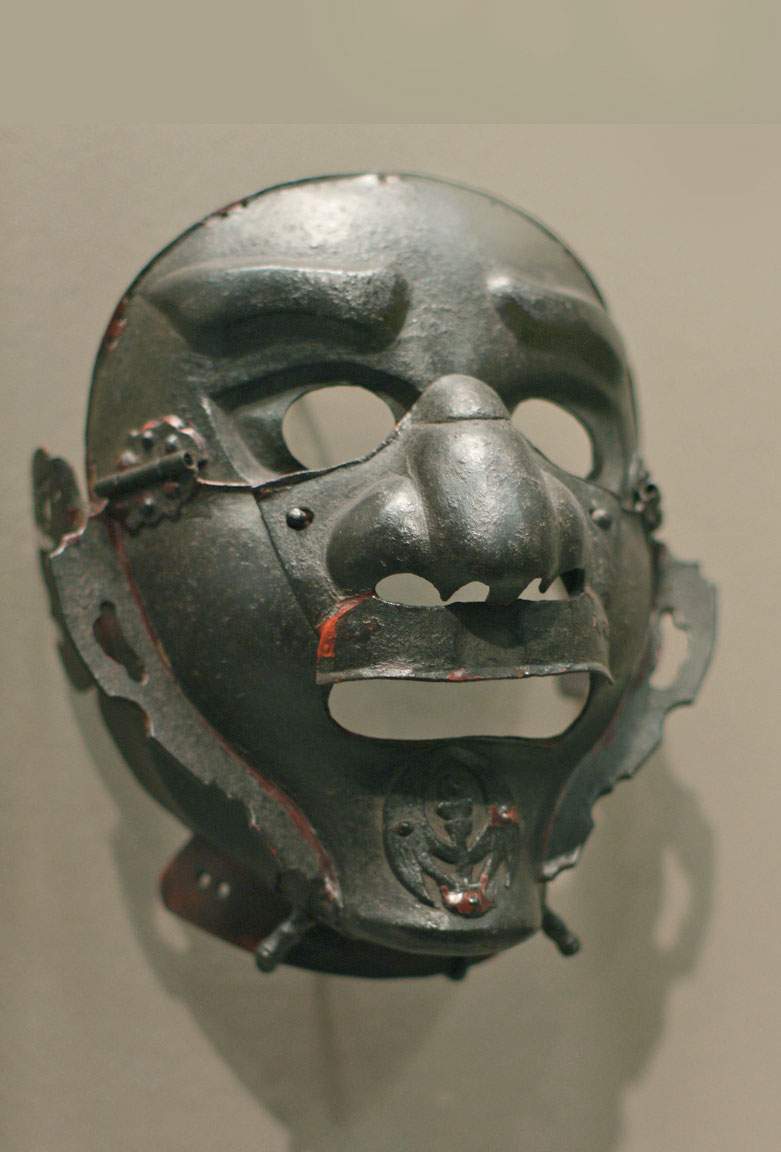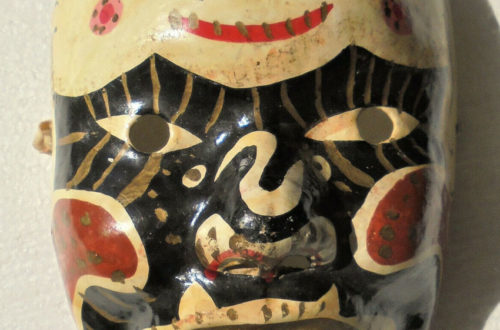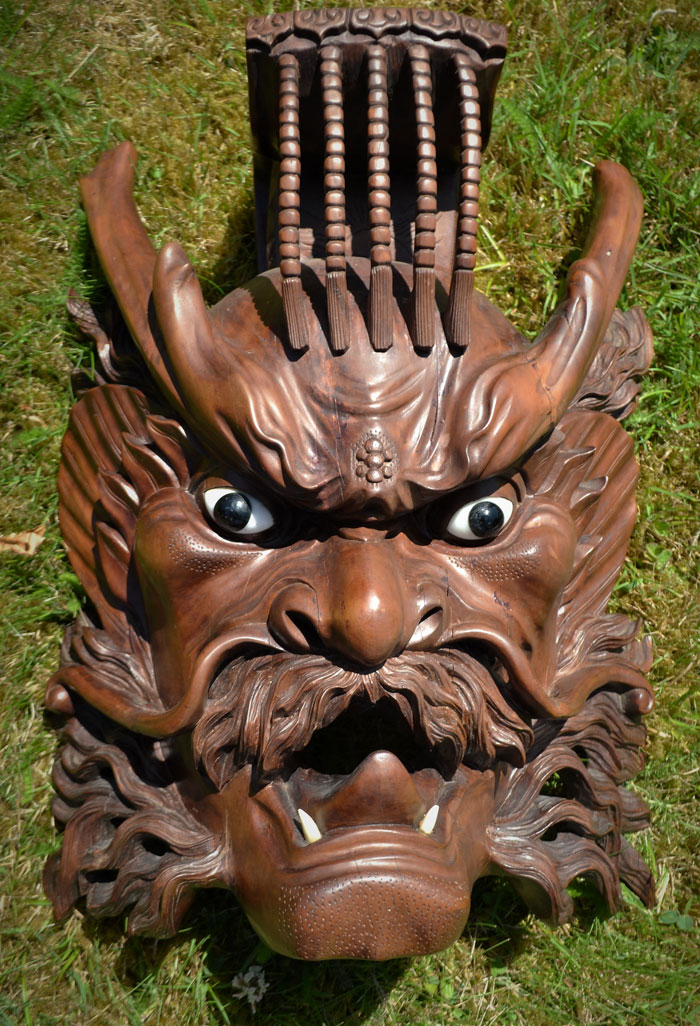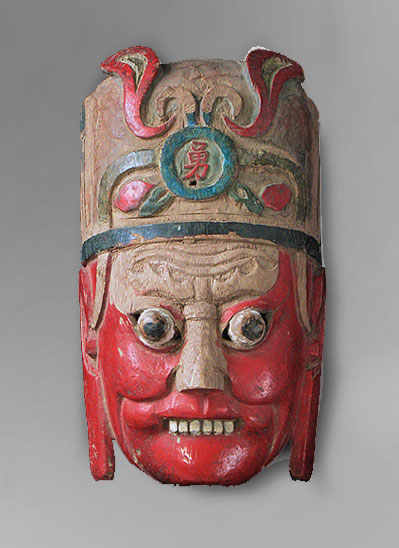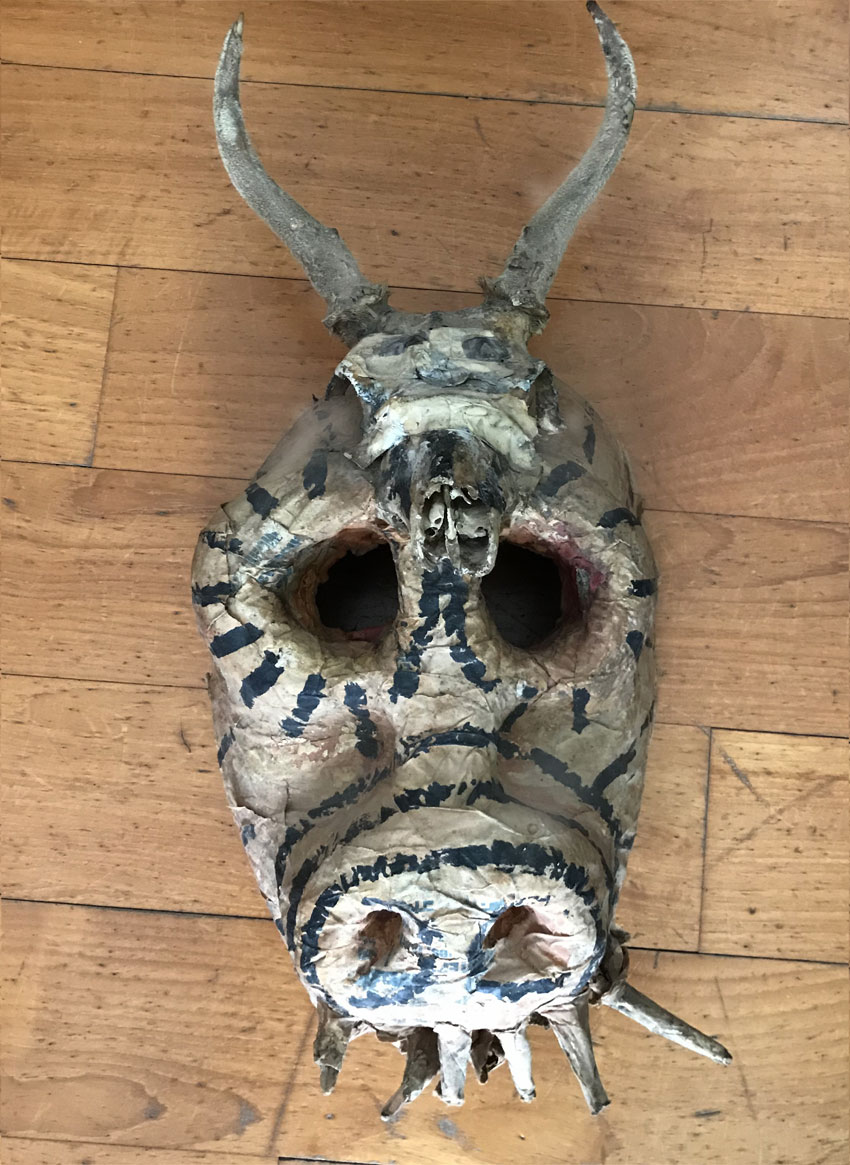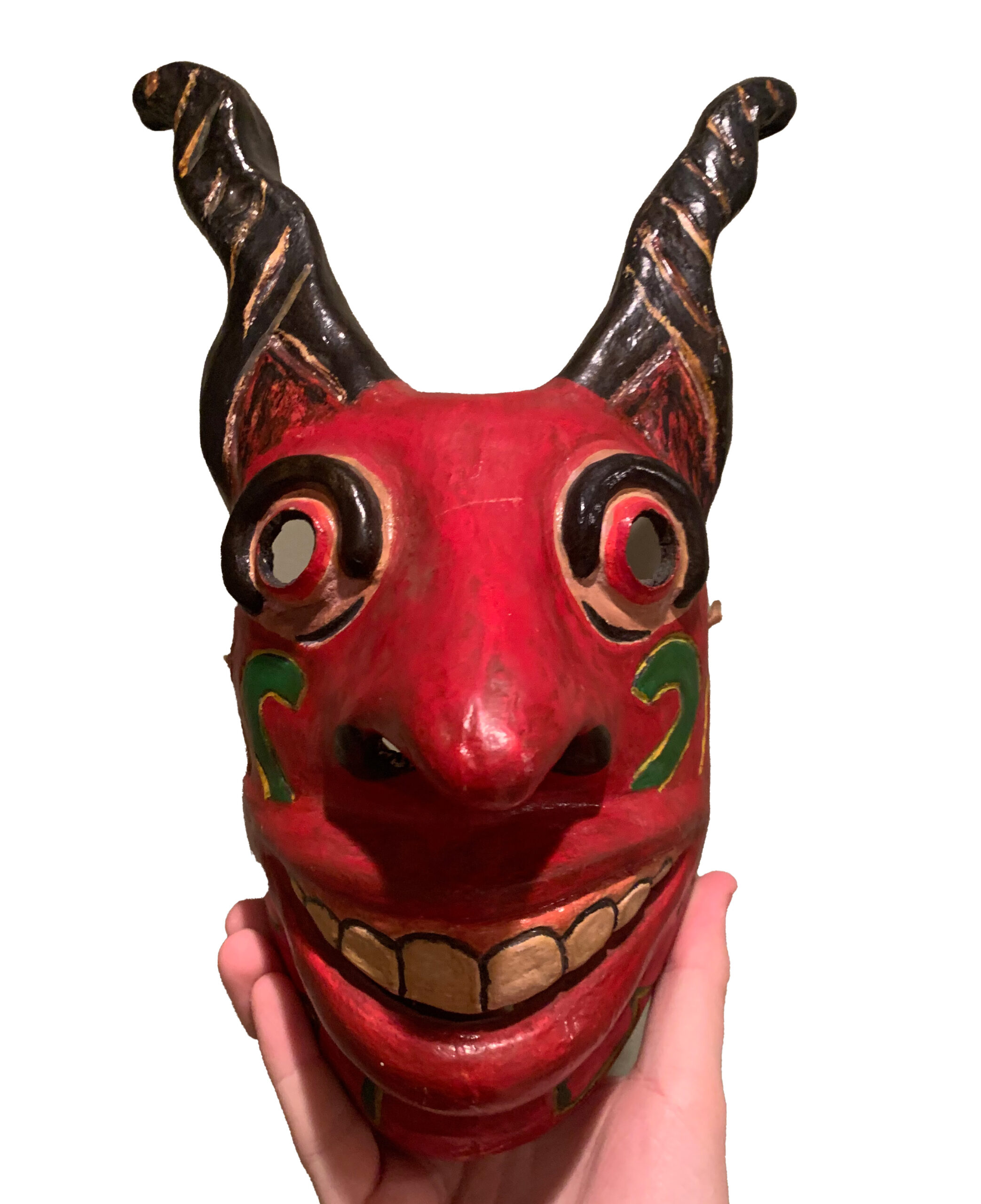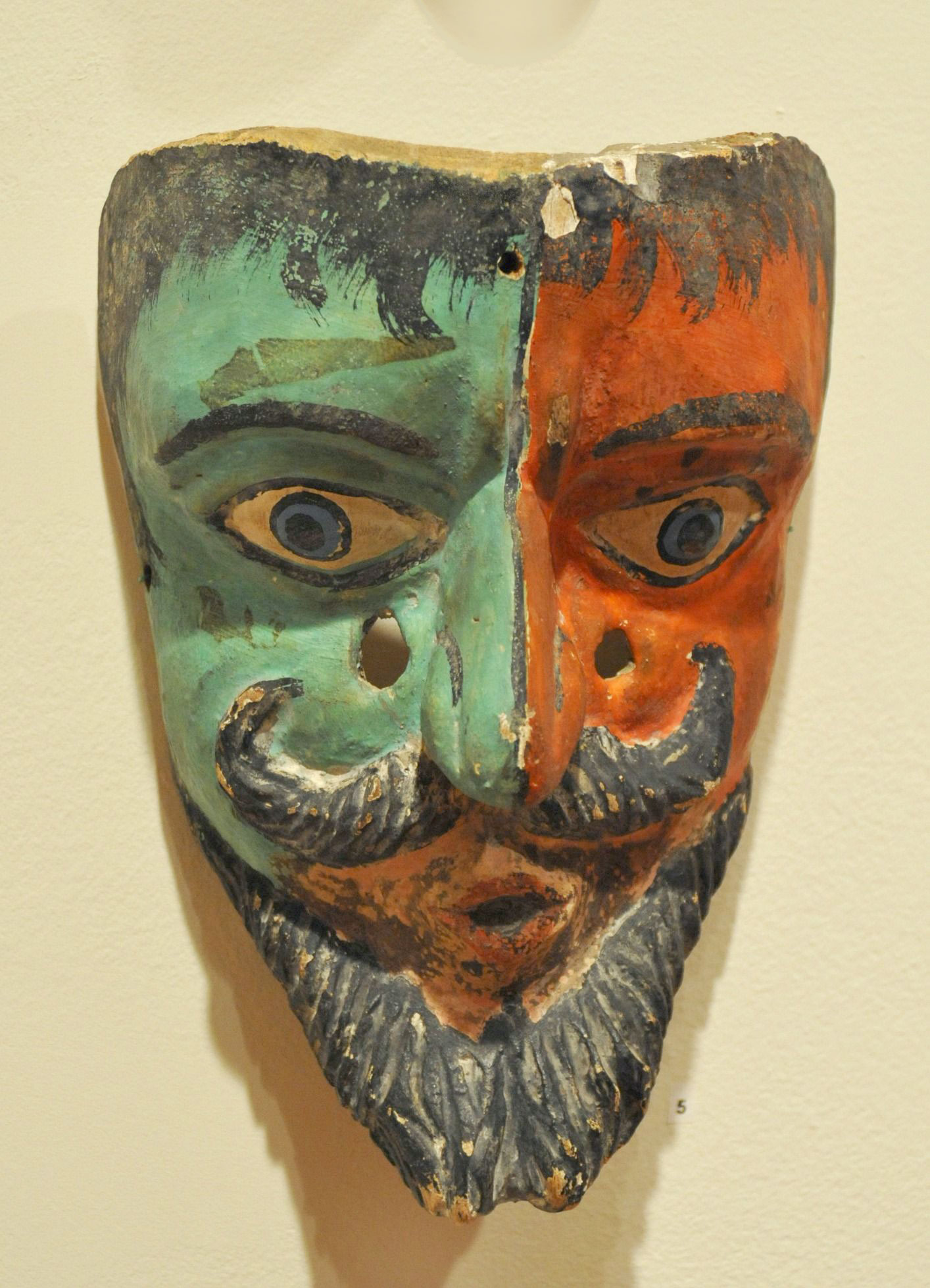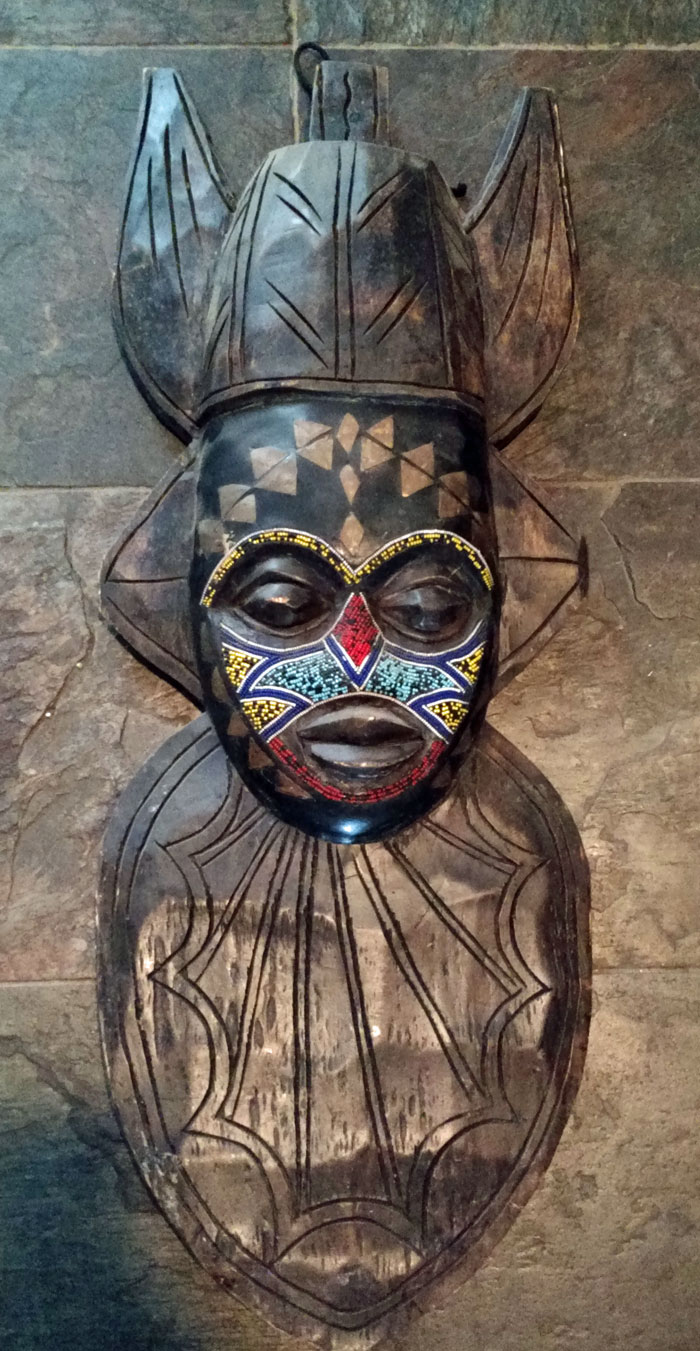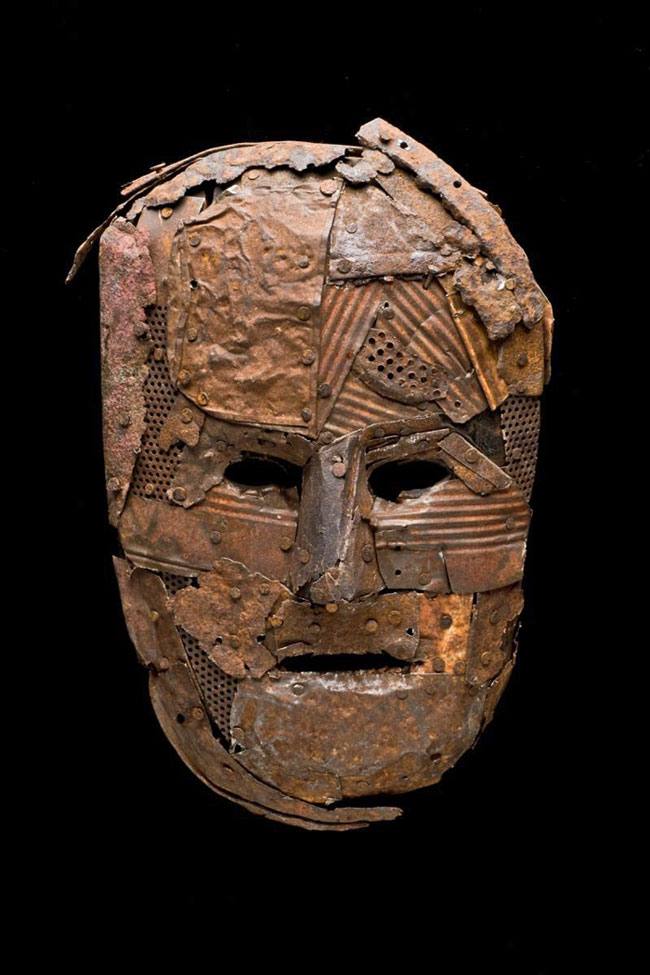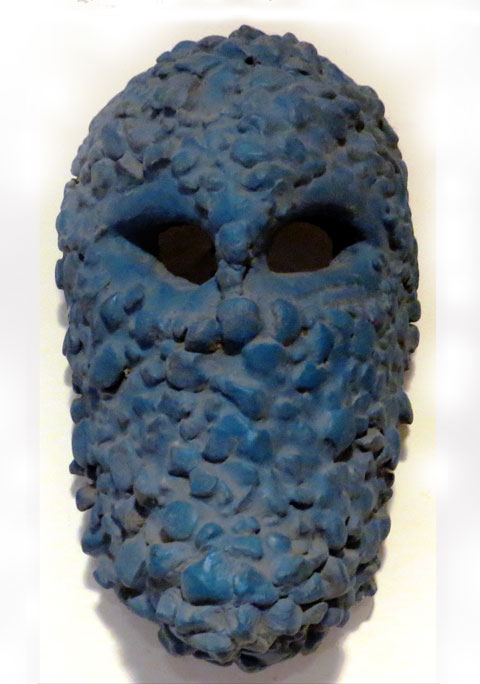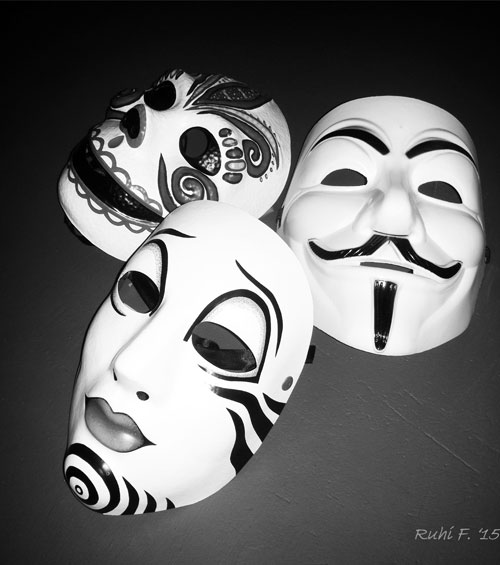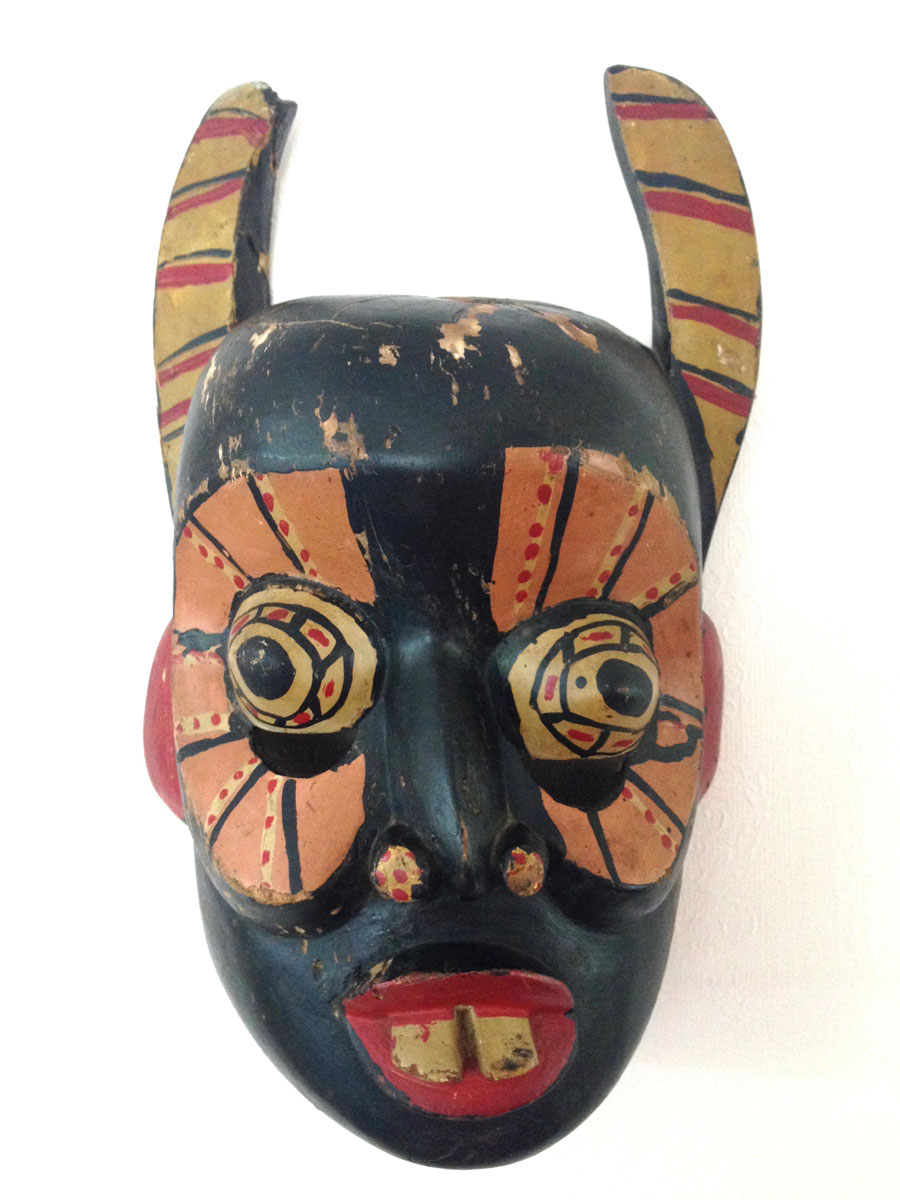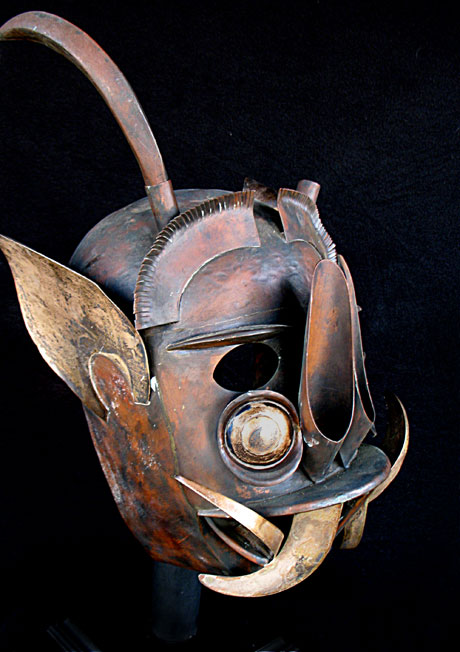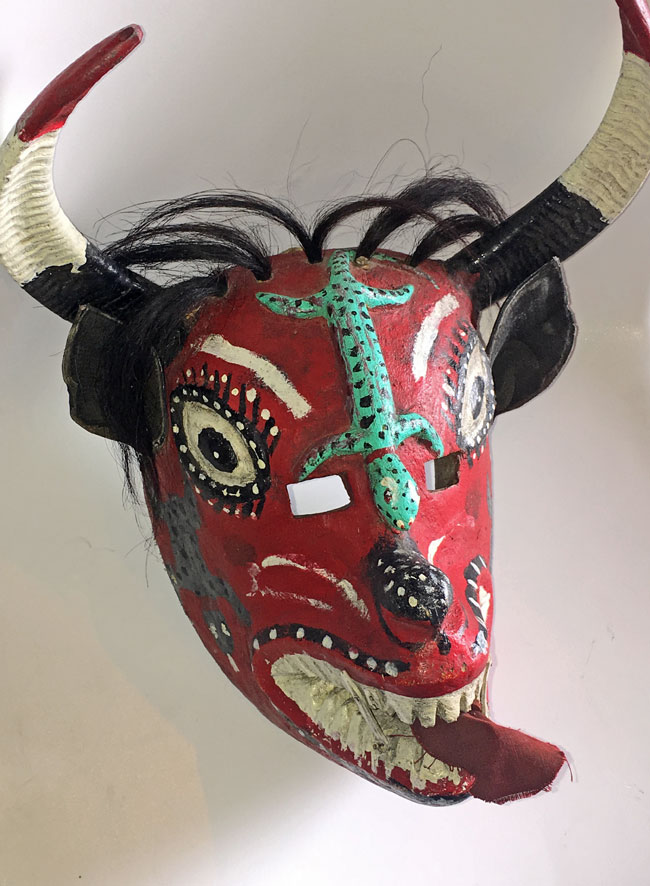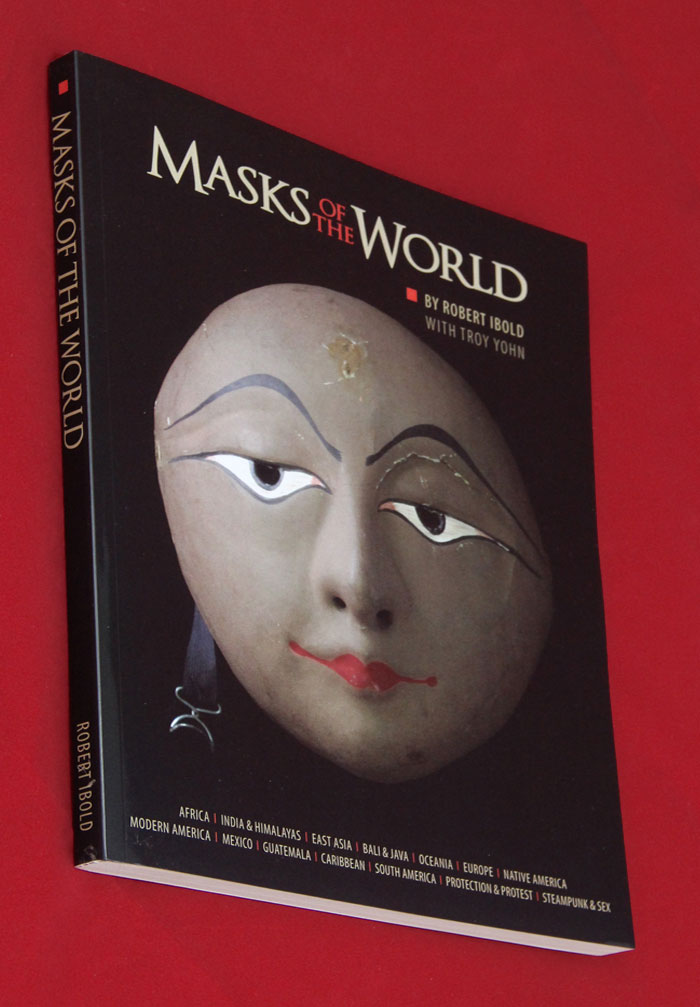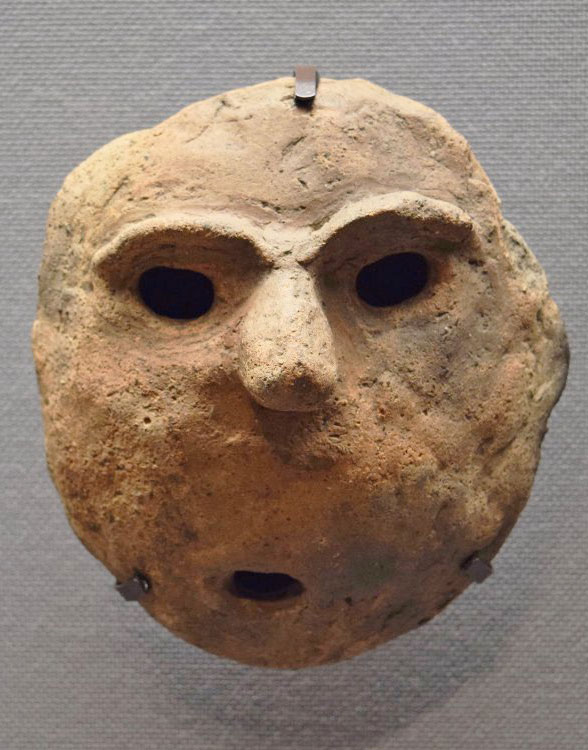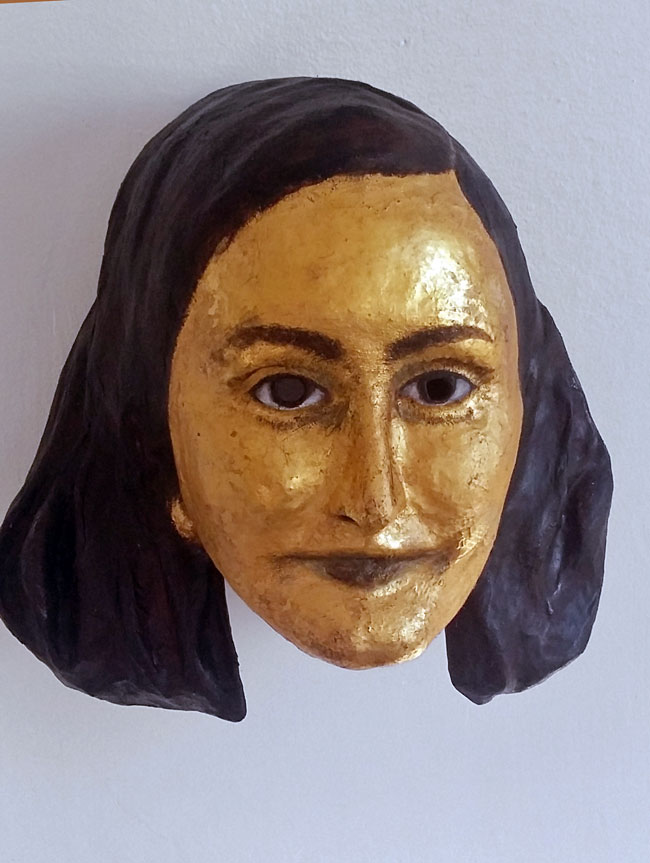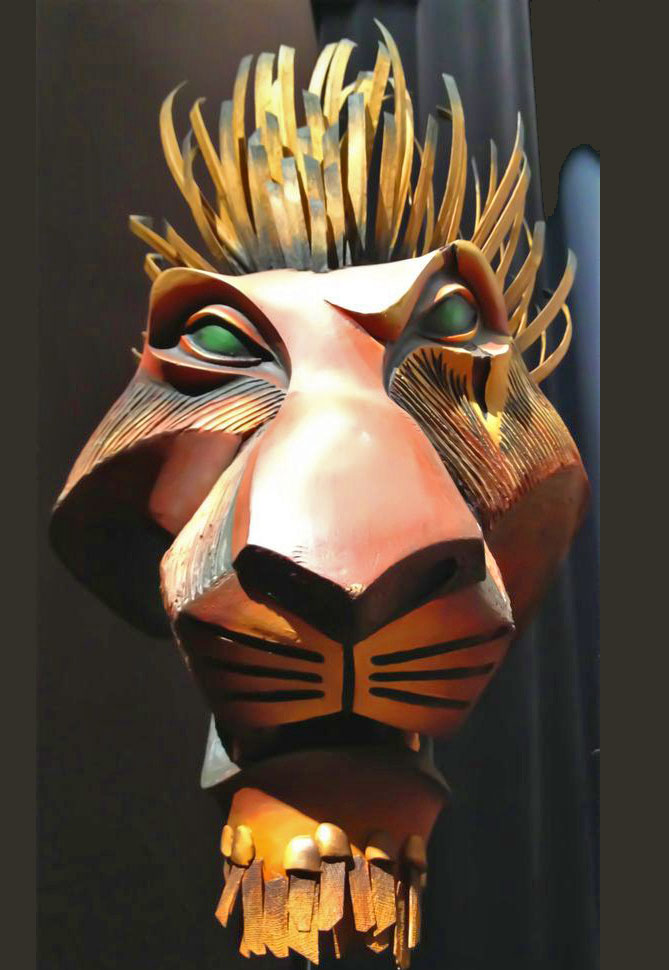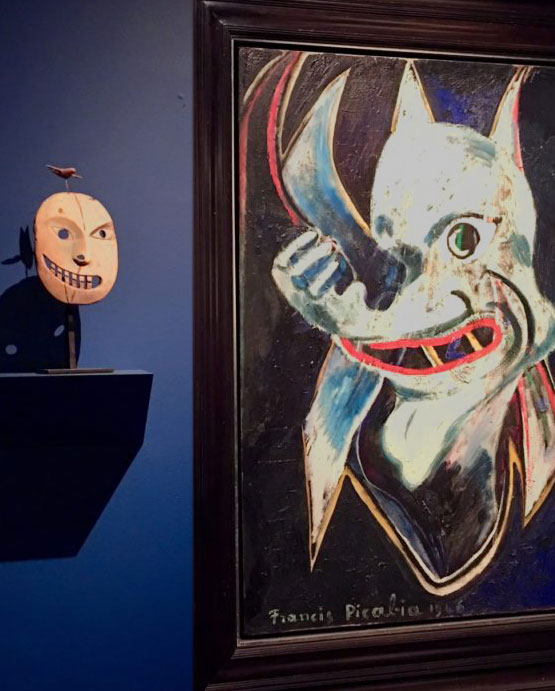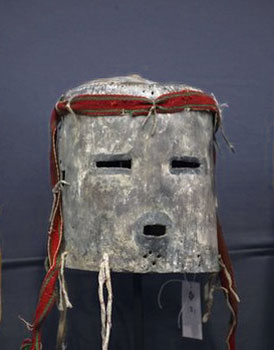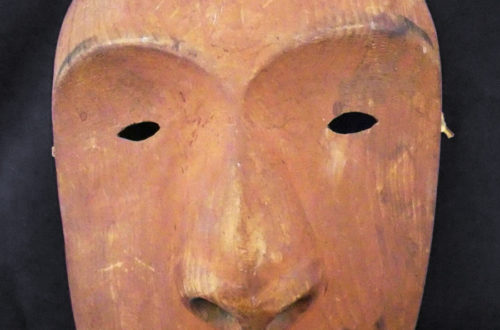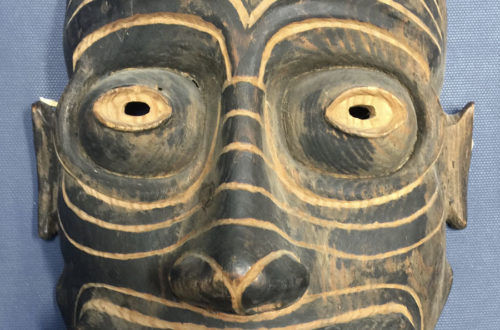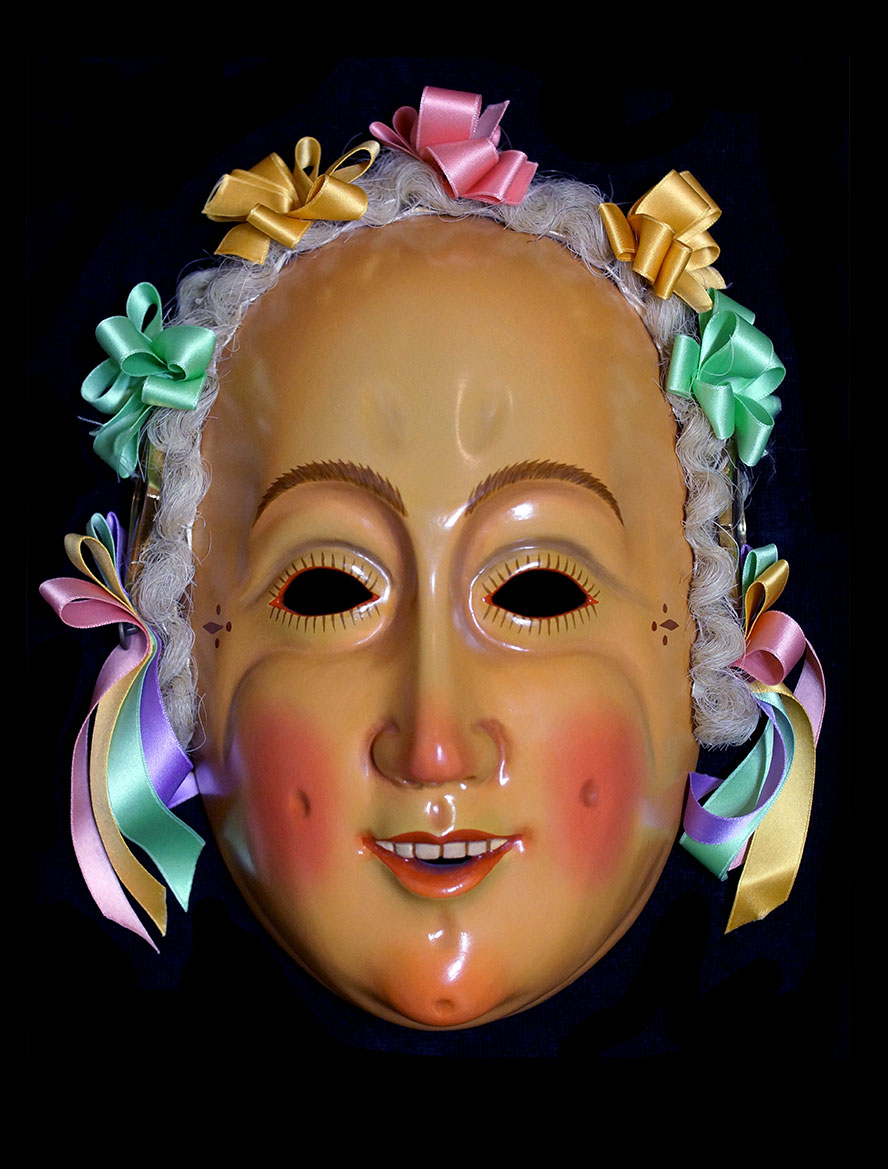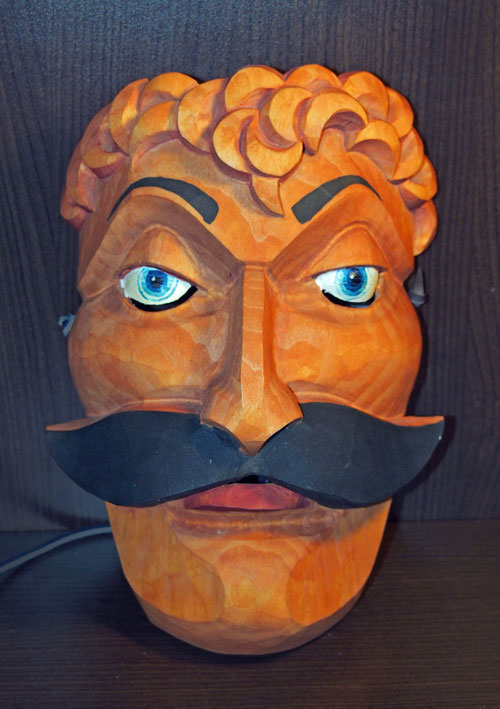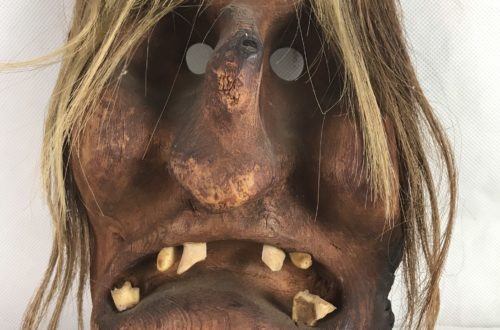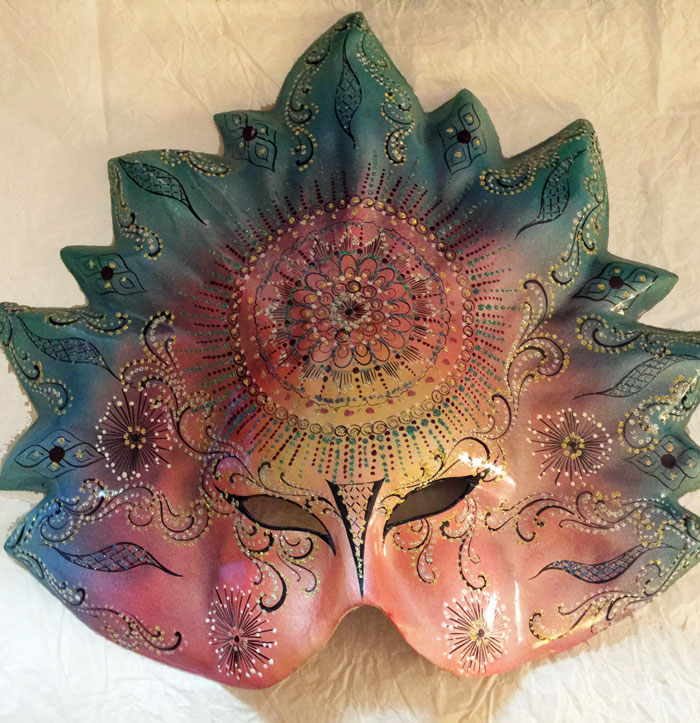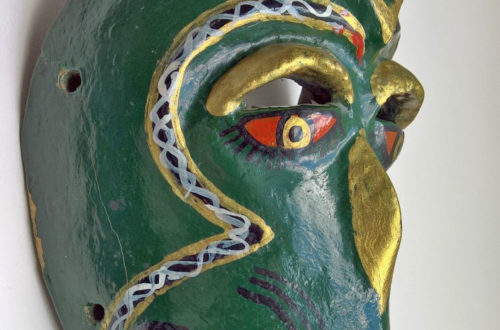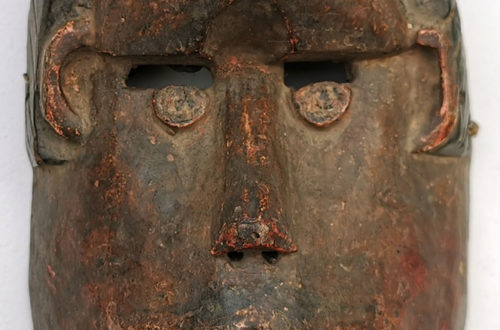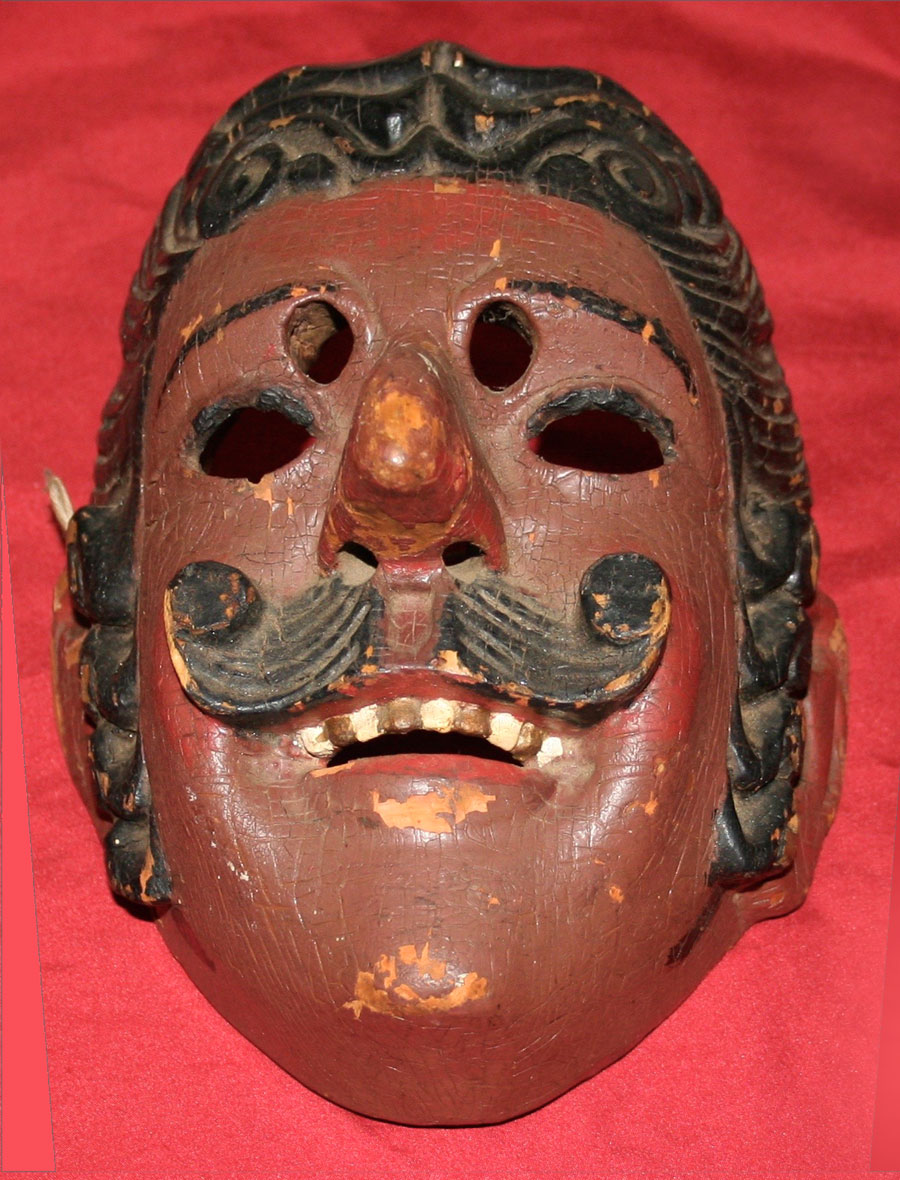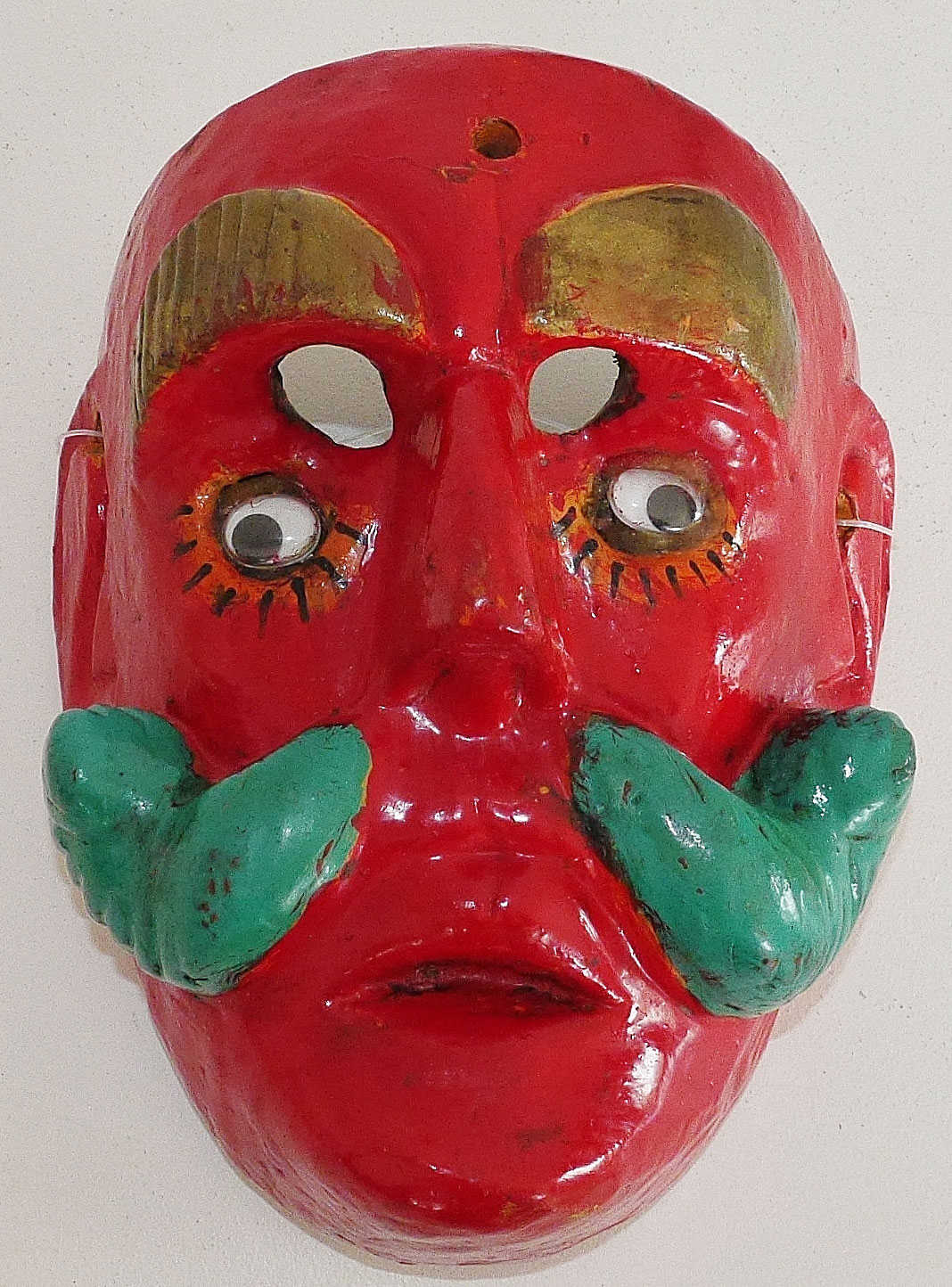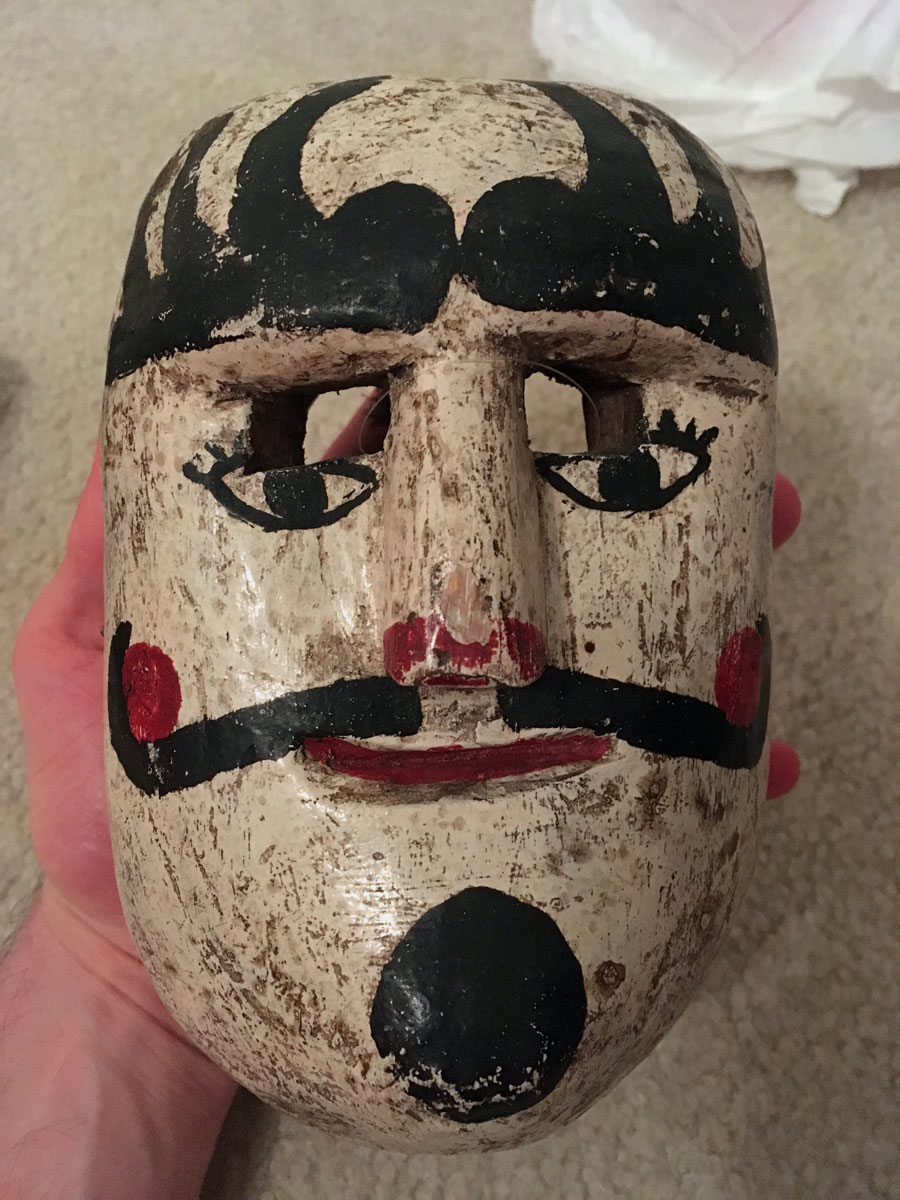Many people collect them for looks or because they are avid sports fans.Other people collect all kinds of protective masks, in fact, we have on this site a category for these. What fascinates me is that this kind of safety equipment is also meant to intimidate opponents. Goalies Bernie Parent and Pelle Lindbergh were famous Philadelphia Flyers who introduced the very scary fiberglass face mask. This one was probably wore by Pelle. Others were a little different and often colorfully painted.
-
-
Samurai metal face mask
Solid metal masks were used by the samurais to protect their face in combat. Along with a large helmet and armor over all of his body, the warrior was well protected. A colorful and rather frightening appearance was also important. The superb set of full-body armor from the 18th century is the second photo. Its facial armor is not the same as the close-up. I will categories this mask in both the East Asia and Protection categories. Beautiful work! Japanese folk art, from masks to clay pots, has always been the best in the world… in my humble opinion.
-
Rare Cora mask from Mexico
Q: I bought this mask in Mexico while living there. Story I was told is It is used in a celebration where it is worn and then thrown in a bonfire. It is made out of paper and clay and has a small skull with horns on the forehead of this unspecified animal. I forgot which state of Mexico it comes from. I mostly collect abstract masks from Mexico, regardless of their market value. Marco, 1359 A: Your bonfire story is true. The Cora people are supposed to destroy there papier mache masks after the Holy Week ceremonies in the state of Nayarit of northern Mexico. Because of this tribe’s…
-
Real masks vs. decorative carvings
Q: I received this mask from a friend who found it, essentially in the garbage, while doing demolition work after a large flood. It is approximately 30″ x 12″ at the widest part. I have a general interest in artifacts from different parts of the world, particularly West Africa and Latin America (Amazonia in particular). Mike, 1358 A: Quite a few decorative carvings come to me for identification each month. Yours is one of the more attractive ones, so I decided to make an exception and post a non-mask. People with little knowledge of tribal art enjoy them, but our viewers are collectors who avoid tourist souvenirs in favor of…
-
Interesting mystery mask
Q: I have been trying to find out more about this mask but have not come very far. Is it maybe a diablo mask? Another possibility would be an Asian mask because of those bulging eyes. The mask fits my face and the holes for the eyes are in the right place, but there are no attachment holes. I suspect that it is a tourist piece. Roosje, 1357 A: Thanks for sending in your three excellent photos. Unfortunately, once again, the Mask Man is stumped. I hope someone will help me out. It has a nice form and good colors. Also there are things about it that don’t look like…
-
Prehistoric clay masks
The first is a Domen period mask from Nagano, Japan. The smaller photo shows a prehistoric clay mask dug up in Turkey. There is also a stone mask from the Middle East shown on page 203 of our book, Masks of the World, that is thought to be over 9000 years old. The tradition of masquerade goes far back in the history of mankind.
-
Tribal art’s influence on modern art
A wooden mask from the Yukon River region of Alaska (ca. 1890–1910). To its right: Francis Picabia’s painting, Monstre (1946). The French artist André Breton once owned the Alaskan wooden mask (ca. 1890–1910) that a gallery paired alongside one of Francis Picabia’s monster paintings. Surrealist artists long admired these Yup’ik masks from the central Alaskan coast, which were made in the hopes of divining bountiful hunts. Breton, Man Ray, and Yves Tanguy all collected the masks beginning in 1934. They saw it as Surrealism from another time and place. African masks are not the only tribal art that had an influence on the modern art of Europe. The second mask…
-
Gschell mask from Germany
Q: I was wondering how a German mask is made? Jimmy, 1354 A: That was a beautiful photo you sent, but a little low in resolution. So the main photo is a female version of yours from the Second Face museum of cultural masks. Here is the beginning of their description. TITLE: Fasnet Gschell Mask COUNTRY: Germany SUBREGION: Rottweil ETHNICITY: Swabian German DESCRIPTION: Gschell Narro MAKER: Helmut Kramer CEREMONY: Fasnet (Carnival) AGE: ca. 1970s-1980s MAIN MATERIAL: wood OTHER MATERIALS: oil paint; horsehair; satin ribbons; mirrors Yours (second mask) is a male version of the same mask. To learn how they are made, do a Google search. Helmut Kramer was…
-
Guatemalan monkey mask
Don’s mask of The Mexican from a Guatemalan dance inspired me to share this picture with you of The Monkey. There are lots of different animal masks used in the popular Deer Dance. Best liked by tourists and collectors is the monkey character. This one is old and used. Newer ones are usually painted in bright black, white and red, with no golden hair. This little country practices masquerade a lot. As you can see on the list to the right, a separate category is devoted to Guatemala.
-
The Mexican Guatemalan mask
Q: I recently picked up this mask. I think it is Guatemalan. It appears to be Pedro Alvarado. I am wondering if this may be the case. Any information would be helpful regarding this mask.Thank you, Don, 1352 A: You are close, but it is The Mexican, not Alvarado. You can learn about either character by going to Google. Here’s the good news. Your mask might be authentic. Most of the masks sent to me are usually reproductions or cheap tourist junk. For the latter I try to write a nice reply, but I don’t post it. A
